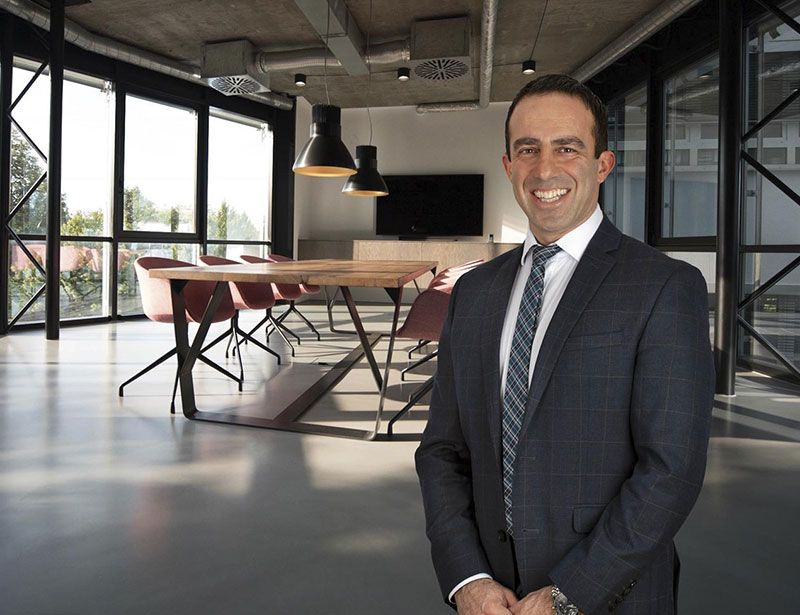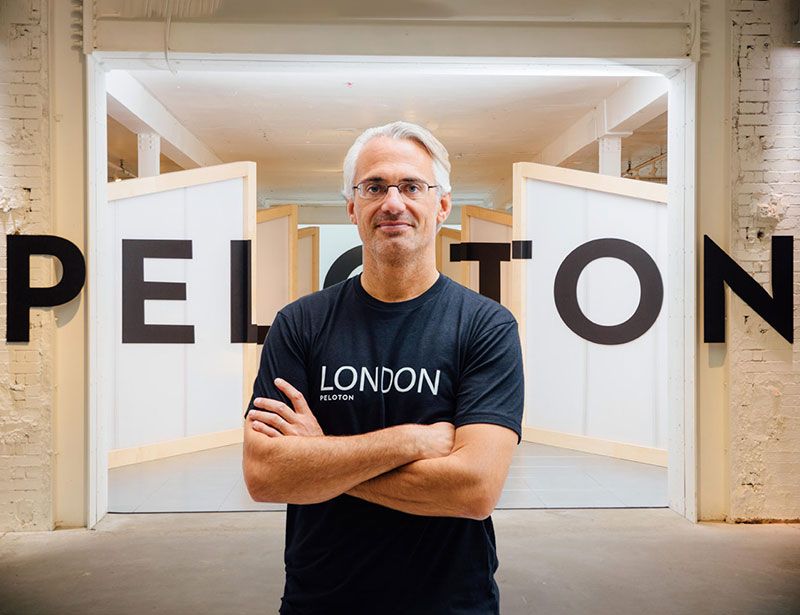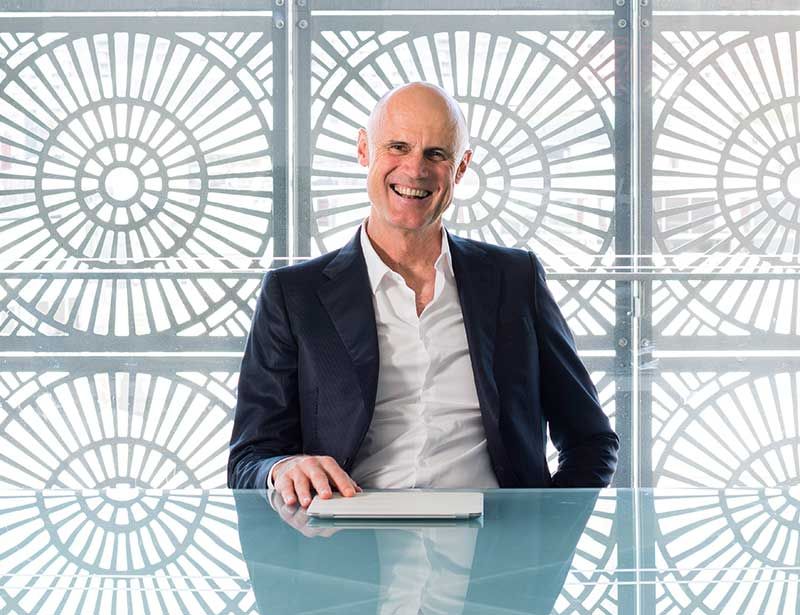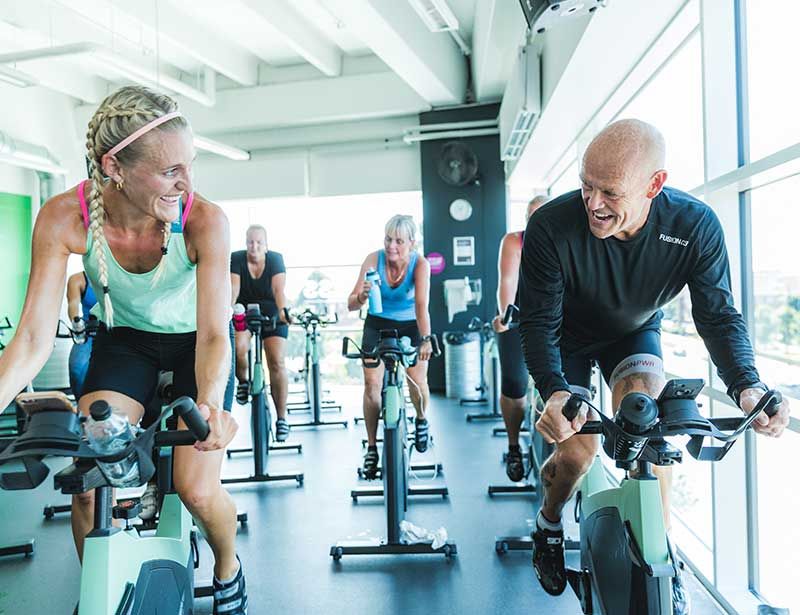Why health is the future of fitness
“What the fitness industry needs to recognise is that training isn’t about being in a certain location,” says ACTIVIO CEO Moris Lahdo. “Health club membership might work for some people, at certain points in their life, but there are lots of other ways to exercise.
“Fitness and training is about where you are in your life right now, and as an industry we need to acknowledge and address this. We need to follow people throughout their life journey, assuming a broader responsibility: that of getting more people, more active in whatever way is best suited to them at that moment.”
He continues: “Technology isn’t the only answer to this challenge, but it certainly has a big role to play – and the likes of Apple and Google are well aware of this. While the fitness industry is busy looking inwards and focusing on membership sales, these tech giants have identified a bigger opportunity to focus on the preventative healthcare agenda. In the next few years, I expect them to create a platform that will connect everything with everyone – where all you need to manage your health is your smartphone – and this will mark the end for a lot of traditional fitness companies.
“Our industry will be fundamentally disrupted unless we start working smart and working with each other. We need to connect and create a seamless platform for end users – one that educates people about their training, their nutrition, their sleep. One that centres on improving health rather than selling memberships; the latter should come once people have got moving, but it can’t be the starting point.”
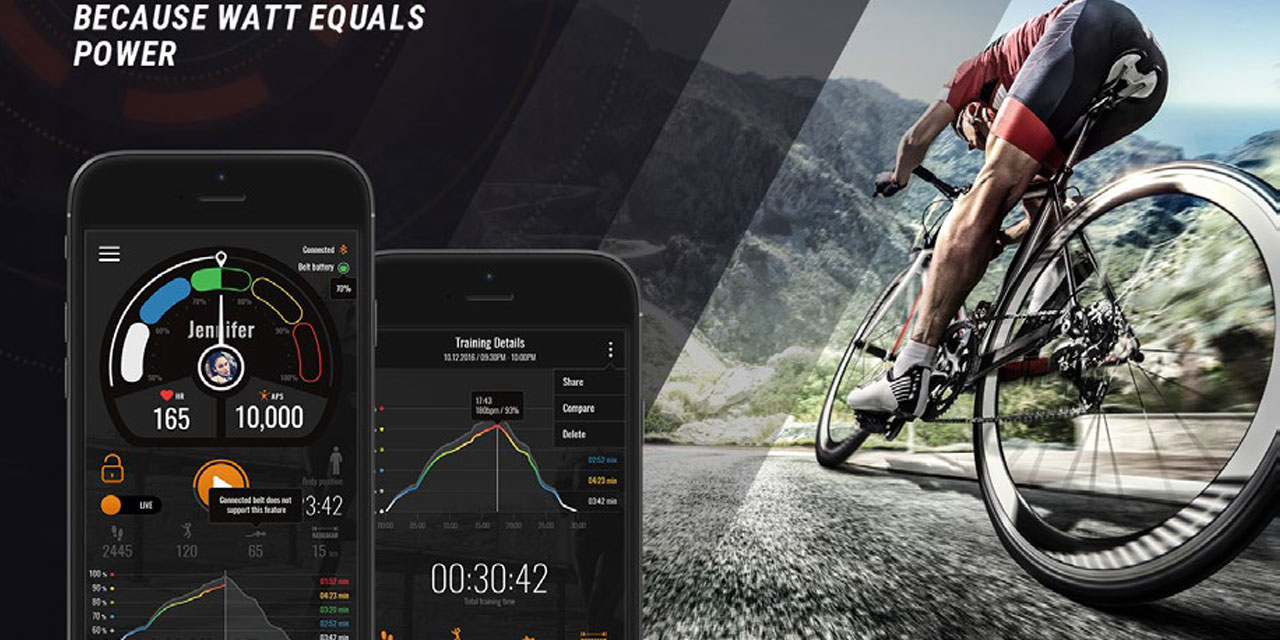
He adds: “The starting point to getting fit and healthy is a fitness tracker or app with training recommendations: something that gets you off the couch and out for a gentle five -minute walk. Perhaps it’s prescribed to you by your doctor. Perhaps your friends recommend it. Whatever the catalyst, one thing is certain: the gym won’t be the natural first port of call for people who are currently inactive.
“To appeal to these people – and let’s not forget, this is the vast majority of the population – the fitness industry needs to adapt. This is our challenge and this is what we should be talking about, not selling memberships to the 10–15 per cent of already active individuals. If we don’t solve this for ourselves, believe me, Apple and Google will come in and solve it.”
Towards a solution
Lahdo explains: “This is something we’ve prioritised at ACTIVIO. Of course, we have great solutions for health clubs, studios and fitness centres – our roots are in professional sports and it remains our mission to optimise the training experience. In a health club environment, we motivate people to push themselves and achieve great results.
“But that doesn’t mean we can’t make our products relevant to the rest of the population, helping less active people to also achieve great results by taking baby steps.”
He continues: “In Sweden, where ACTIVIO is headquartered, a lot of people are prescribed physical activity by their doctors. That’s great, but technology-wise it’s a very closed system. Now imagine instead a system whereby your activity data is sent up to a cloud, to be shared with whoever it is who’s helping you improve your health – your doctor, your fitness coach, your mentor. This is how ACTIVIO works.
AS AN OPERATOR, HOW DO YOU DESIGN YOUR PROGRAMMING SO PEOPLE FEEL THEY’RE MAKING PROGRESS?
“ACTIVIO also becomes a coach inside your smartphone, recommending exercises and activities to help you towards your goals. To start off, it might prescribe 3 x 5-minute walks each week, telling you to stay in the blue heart rate zone – so just a gentle stroll to get moving. It’s about helping people accept the need to train in the first place, as well as helping them easily understand how to do that – how to live a healthier life.
“We also do a lot of work with schools. Kids are incredibly motivated by our system – even kids who are usually totally sedentary. The moment they put on an ACTIVIO heart rate belt and see their colour-coded gauge on the screen at the front of the room, they start running around to see how high they can get their heart rate. It’s about creating movement and joy at this age. In the end, they may become gym members – but not if you don’t intervene when they’re still children, getting them away from their phones and their tablets and getting them moving.”
He adds: “ACTIVIO is already used by over a million people every month. If we can continue to expand into new markets, and continue to extend our capacity to prescribe, I believe we can help whole populations to become healthier.
“I also believe this is what the whole fitness industry should be doing – connecting different levels and groups in society to encourage movement and health.”
The consumer is king
Even within the health club environment, a key goal for ACTIVIO is helping exercisers realise how their training impacts their overall health, by giving them ownership and understanding of their training data.
Says Lahdo: “ACTIVIO’s mission has always been to optimise the training performance. To this end, one of our key USPs is the way we present training data.
“When you’re under stress – during exercise, for example – the brain finds it harder to process
TO IMPROVE HEALTH, WE HAVE TO ACCEPT THAT PEOPLE OWN THEIR OWN DATA
numbers and figures. Based on this scientific insight, we made a conscious decision to use a simple analogue display for the ACTIVIO system: a gauge that looks a bit like the speedometer in a car, but where colours replace the numbers around the edge. The coach tells you to hit a specific colour zone and you gear your effort level accordingly – and that’s it. You learn how each zone feels, and that’s what’s important.”
This approach is constant across ACTIVIO’s portfolio of products, from the premium, fixed installation to the portable, tablet-based solution to the power solution that wirelessly collects data from indoor bikes. It’s also the approach in the brand new ACTIVIO Next Level platform, which will be launched soon.
What’s equally important about ACTIVIO Next Level is the open nature of the platform. Lah-do explains: “We’re already seeing consumers bringing their own smartphones and wearables into health clubs, and this will only increase over the coming years. They want to be able to use their own device, to wear their choice of heart rate belt or monitor in class. Closed systems will become less and less relevant.
“ACTIVIO Next Level is therefore an open platform that will work with all the major brands of heart rate belt. We will also integrate our solution with Apple Health, GoogleFit, Strava, Runkeeper and so on. If the member wants to use an ACTIVIO belt, great – they will be able to benefit from all the measures we can track, from heart rate and power, to pace and distance through our memory recording and accelerometer technology.
“But belt sales aren’t our priority. We want to be a ‘hub in the club’ that allows for excellent coaching, motivation and education – and where the club is at the heart of that experience – but where the member uses their own tech. They get to choose where their data goes after the workout.
“If we want to help people improve their health, we have to accept that they own their health data.”
Enhancing the experience
He concludes: “Interestingly, adopting this data-based approach also enhances the training experience, which in turn improves member retention.
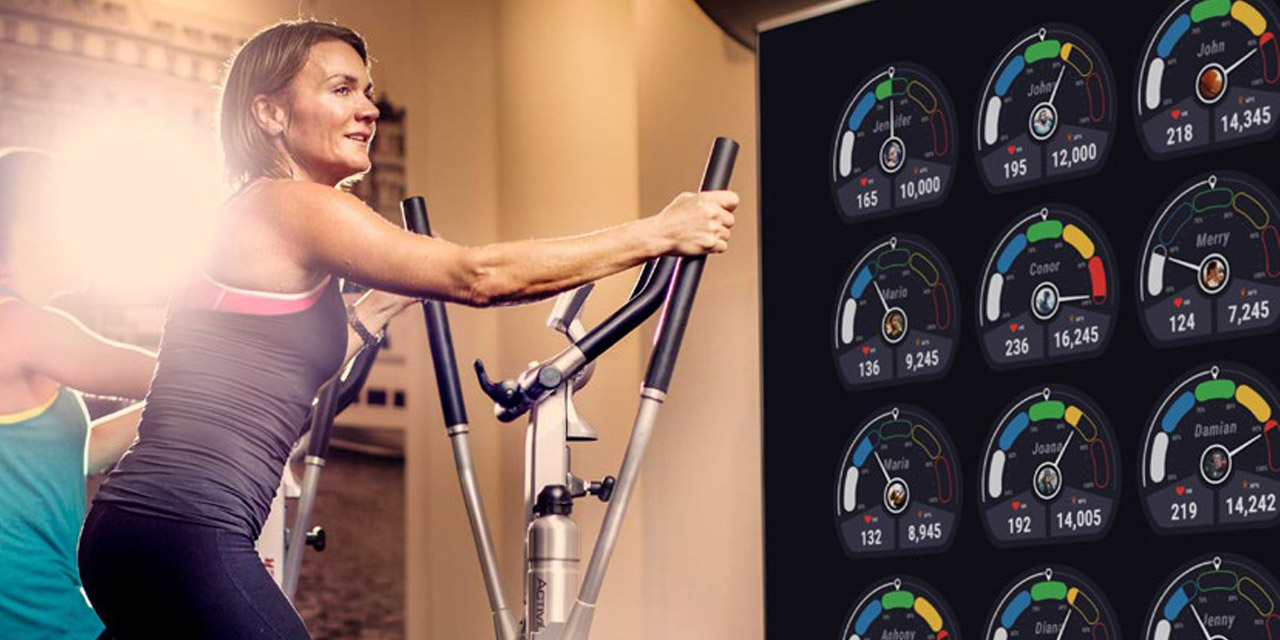
“Training data can add huge value to the indoor cycling experience too. In cycling classes across the sector, there’s a lot of stuff going on these days to keep people engaged: virtual footage, immersive experiences, real-time inter-club competitions and races. This is all great and will continue to play a big role in the future of indoor cycling, but I believe education is also key. Why should people do CV training?
Why should they cycle? Entertainment is great, but members need to know why they’re doing what they’re doing.
“We also need to add recommendations into what we do. What should be someone’s next workout? How can they progress? And as a gym operator, how can you design progression into your programming each quarter so people feel something is actually happening as a result of their exercise – that they’re making progress?
“Monitoring lies at the heart of all of this – heart rate, power and so on. In itself, it adds to the experience. It makes exercise very engaging when you can see your data in front of you and understand how what you do in your workout can affect it.
“But it’s also about showing someone how they’ve progressed. It’s about showing them how they’ve improved their health.
“If the fitness industry wants to be attractive in the future, it needs to focus on health – on helping people live a healthy lifestyle, and live it for many years.”
INTRODUCING ACTIVIO NEXT LEVEL: THE HUB IN YOUR CLUB
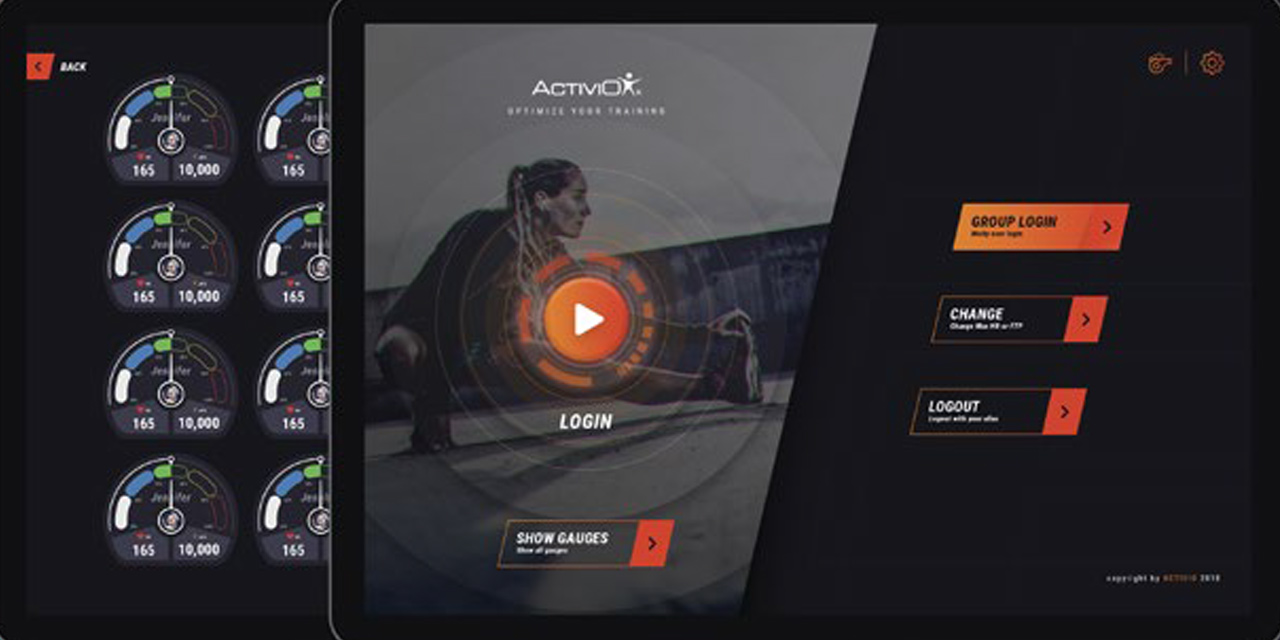
A new ACTIVIO Points™ (APS) system awards points to exercisers according to the effort they put in during their workout. This evidence-based system is linked to the ACTIVIO Sport Solution for professional teams.
-
Track and analyse a variety of performance metrics including heart rate, power, cadence, distance, APS™, calories and more.
-
Run fitness tests in class, from FTP to VO2 max. After each test, display the results and upload them for future use – a great way to boost member motivation and track progress over time.
-
Offer team competition mode, leaderboards and gamification to motivate members during exercise – and afterwards, with social media integration allowing members to share their training experiences.
-
Use structured workouts in your classes or let your instructors create their own workouts, which they can share with other instructors in your club. Using Virtual Trainer, club instructors can design their own class profiles – based on heart rate or power – and run those classes on the group exercise screen.
-
OPEN ACTIVIO™ doesn’t tie customers to specific technology: they will be able to use heart rate monitors from all the most popular brands and wearables.
-
A new cloud service will connect to the likes of Strava, Runkeeper, Google Fit and Apple Health.
-
An updated training app will offer memory recording and acceleration features.
-
Developed for future system integrations with modern API.
-
A new instructor education platform offers five different lecture programmes to share the latest science around heart rate training and power (watts) training.
Peloton: ‘A category of one’
What’s Peloton’s vision?
The inspiration behind Peloton is simple: people want to work out, but there are a lot of obstacles that stand in the way.
Peloton CEO John Foley experienced this first-hand when, with two kids at home, he and his wife Jill could no longer fit studio classes into their busy schedules. The idea for Peloton was born: studio-style, group fitness classes at home, letting people access the motivation, power and intensity of these classes any time, anywhere.
Peloton started with a bike, but it never set out to be just a bike company. It was always about bringing instructor-led group fitness classes to the convenience of your own home. Over the years, we’ve expanded and we continue to evolve our offering, but those founding principles remain the same.
Peloton has set the home fitness market alight. Why do you think this is?
The secret of Peloton’s success is that it’s more than just a class, a cycling studio or a bike: it sits at the intersection of fitness, technology and media and has reinvented the way people work out.
We talk about Peloton as a category of one; while there are similarities with brands that offer indoor cycling, we are more than any single bike, cycling class or studio.
The live component and community are what truly set us apart. We have over one million members in the Peloton community so, alongside the motivation from our instructors, our members can also give each other a boost.
The Peloton Bike features a real-time leaderboard, allowing you to track your progress versus other riders as well as your own Personal Record. In addition, we have a feature called ‘Here Now’, where the leaderboard shows other members who are riding in the same on-demand class at the same time as you; you can then give each other virtual high fives and support.
THE LIVE COMPONENT AND COMMUNITY ARE WHAT SET US APART – WE HAVE OVER ONE MILLION PELOTON MEMBERS
Other social features include ‘Ride with Friends’. When you hop on your Bike, you’ll receive a notification on-screen if a member you follow is currently taking a class. That way, you can join in and ride together on the leaderboard.
In short, members develop incredible relationships and connections with the community, who all share a passion for our brand. The way they motivate and interact with each other on the lea-derboard and on social media is truly amazing – and it converts riders into workout addicts
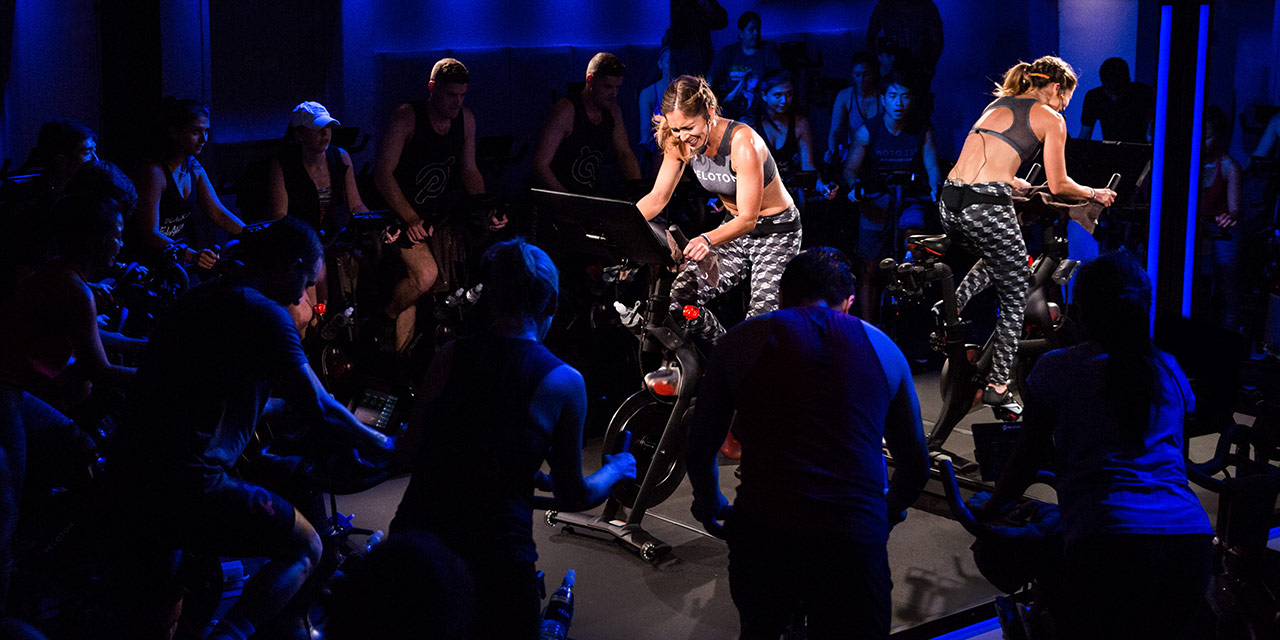
The Peloton Bike has a fairly high price point. Who is your target market?
Peloton has a very diverse member community, both geographically and socio-economically. What unites them is their desire for a high-quality workout with a great instructor and motivation.
They are often time-poor, so appreciate the convenience of Peloton. In addition, the monthly subscription fee is charged per household, so if you have more than one person working out, that’s a shared cost: you can have multiple profiles and riders for a single Bike.
In the UK, our monthly subscription is £39. With an average of 13 rides a month per subscription, that works out to be only £3 per ride.
How many Peloton classes are live streamed each day?
For cycling specifically, up to 14 classes are live streamed each day and we’ll have hundreds or even thousands of members taking part. In fact, some of Peloton’s recent themed rides have at-tracted nearly 20,000 live riders at one time.
During the live classes, instructors can see who’s taking part in their class, as well as those who are celebrating a milestone such as a 100th ride or a birthday, which enables them to give shout-outs to home riders.
However, it’s not just about interaction between instructors and members, but between members too. Members who have connected via Peloton will often plan to ride together and will motivate one another during the class.
Every single class that’s live streamed is then automatically added to our on-demand library, so members have access to the content any time, anywhere, regardless of where they’re based in the world.
You also have class participants in the New York studio. Can anyone go to these classes?
Anyone can visit our cycling studio in New York City to try a class. Often, we find that existing Peloton members will visit the studio to celebrate a milestone ride or to meet up with other members they’ve met through the class leader-board or social media.
We always recommend that members and new visitors to the studio book their preferred class as far in advance as possible (schedules are released a week ahead) but, with up to 14 classes live streamed each day, there are plenty of options. In addition, rides outside of the peak morning and evening times operate on a free, walk-in basis.
You now have a treadmill product too. What are your plans for this?
We announced our second hardware product, the Peloton Tread, at CES in January 2018 and started delivering units in the US this past fall.
WE ANNOUNCED OUR SECOND HARDWARE PRODUCT, THE PELOTON TREAD, IN 2018; THE REACTION HAS BEEN INCREDIBLE
Similar to the Bike, the Peloton Tread allows people to take live and on-demand group fitness classes, led by world-class instructors, from the comfort and convenience of their own homes. Peloton currently has a team of 11 Tread instructors who teach total body circuit training, walking, running, strength, stretching and audio-only outdoor running.
The reaction to the Tread has been incredible so far. Though it’s technically a treadmill, it’s really designed to deliver a total body workout, with live and on-demand classes across running, walking, bootcamp, strength and stretching.
Any plans to launch more products?
Peloton is always expanding its fitness content offerings to provide members with an ever-more diverse array of options to stay fit, happy and healthy. In December, we introduced live yoga and meditation classes, which offer a great complement to cycling.
We now have three studios in New York City – Cycling, Tread and Yoga – which are set up for live streaming of content.
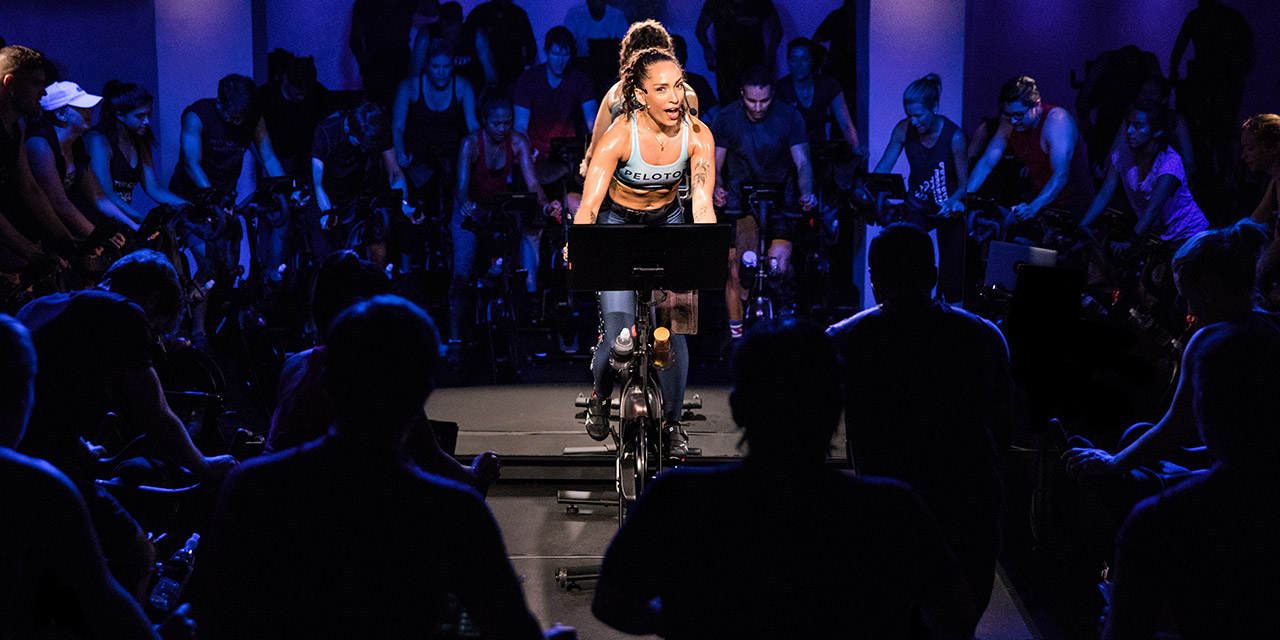
You also offer a digital membership. How does this complement the Bike and Tread?
Peloton Digital is free to all Bike and Tread owners and offers access to over 10,000 classes across categories such as cycling, running, walking, bootcamp, strength, stretching, cardio, yoga and meditation.
For non-Bike or Tread owners, you can access the full content library for £19.49 a month – less than the cost of one boutique fitness studio class. We believe the quality and breadth of content, as well as the community surrounding Peloton, sets us apart.
You recently launched in the UK. What has been the response to date?
The response has been incredible, with a community of UK-based members that’s growing daily – even faster than in the US when the business launched there.
Since the UK launch in September 2018, we’ve run our first TV advertising campaign, hosted thousands of rides at Peloton House in London, announced two UK instructors and opened multiple retail locations. Our pop-up in Covent Garden (Peloton House) has now closed, but you can take a test ride at any time at one of our retail showrooms.
We’re currently in our planning phase for a fulltime UK studio and will be opening it in 2020. In the meantime, cycling classes taught by our UK instructors are currently recorded from a location in London. They aren’t live streamed, but quickly become available on-demand for all members to access any time, anywhere around the world.
There’s enormous potential to disrupt the fitness market in the UK, and we’re only just getting started.
Will there be any differences between the way you operate in the UK versus the US?
In many ways, we’ve mirrored the US strategy in the UK. We sell direct-to-consumer through our website as well as through retail showrooms, and have built up our own delivery infrastructure to ensure we provide the highest-quality customer experience at each touchpoint.
Are you looking at any other international markets for expansion?
Right now, our international expansion efforts are focused on the UK and Canada; we launched into the Canadian market in October 2018.
The focus for the UK over the next 12 months is on growing our member base and introducing more people to Peloton. We have no immediate plans to launch the Tread in the UK, though, as we’re 100 per cent focused on penetrating the market with our core product: the Peloton Bike.
I read that you might go public in 2019. Is that still on the cards?
We’re not discussing specific timing for an IPO and, right now, are focused on using the capital we have to expand the business across product, retail and global expansion.
[Editor’s note: Recent news coverage suggests some progress has been made since this interview, with reports naming Goldman Sachs and JPMorgan Chase as the banks chosen to lead the IPO. However, Peloton reiterates that no specific timing is being discussed for an IPO at this stage.]
HAVING LOCALLY-BASED INSTRUCTORS IS REALLY IMPORTANT: THEY UNDERSTAND THE MARKET
Is it your ultimate vision to have numerous studios around the world, all live streaming?
Our studios are different from other cycling studios – they’re really state-of-the-art broadcast production facilities – so our business model will never be to open many studio locations around the world.
At the moment, we’re focused on continuing to offer 14 hours of live cycling content from our current NYC studio, as well as on building the studio in London and a new multistudio facility in New York City, which will open next year.
Having locally-based instructors is really important though: they understand the market, the music and what motivates people. That’s why we announced two UK instructors in November 2018.
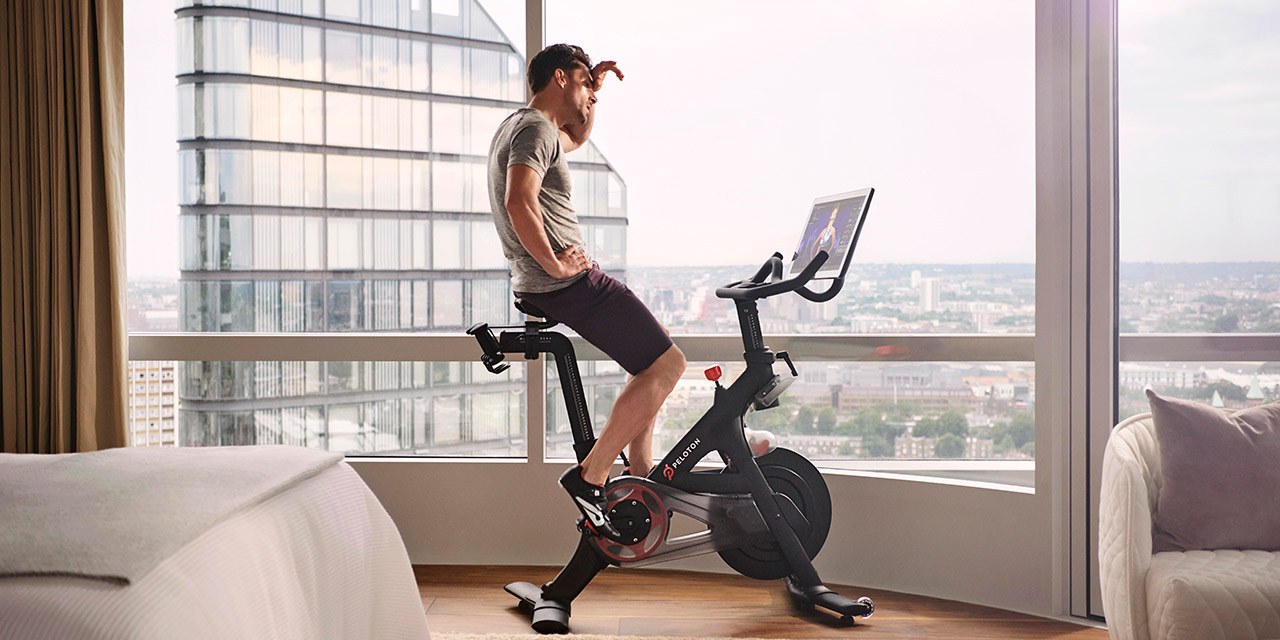
Do you think Peloton has changed the way people want to consume cycling?
Yes. I truly believe that Peloton has reinvented the category and that we’re creating demand.
We often describe Peloton as boutique fitness with a 2ft commute – you no longer have to live in a major city to get the benefit of boutique fitness classes – and the immersive experience of riding with Peloton means you’re motivated to train like never before.
Do you feel athome exercise can genuinely rival the experience of being in a club?
While gyms can still serve their purpose, we believe that fitness is moving into the home, much like movies and video games have over the past decade or so. If you can get a better fitness experience in a better, more convenient location, it could theoretically replace the need to belong to a gym.
What do you see as the future of the indoor cycling market, and what role will Peloton play in this?
I think technology will continue to play a huge role. For Peloton, technology underlies everything we do and is a big differentiator for us. We would consider ourselves to be a technology company first, content second, hardware third.
Ultimately the goal for Peloton is to be the global fitness platform for the home.
KEVIN CORNILS: PELOTON’S PERFECT MATCH
“I’ve co-founded, scaled and sold market-leading businesses across Europe in retail, media and digital services,“ says Kevin Cornils.“ I was a founding member of the team that brought the Match.com online dating business to Europe from the US, and was previously CEO of Glasses Direct, Europe’s largest online optical business.
“My passion has always been building businesses that are either creating new markets or disrupting old ones. Peloton is a great example: an exciting business that’s creating a whole new connected fitness market.
“I joined Peloton in January 2018, to oversee global business and expansion beyond the US, but have been following the brand since launch. I went to Harvard Business School with Peloton CEO John Foley, and was the first person in the UK to order a Bike when he launched Peloton on Kickstarter in 2013.
“I believed from the beginning that Peloton was a game-changing concept – one that would resonate with people who care about health and fitness, and who want a convenient and high-quality solution.“
PELOTON IN NUMBERS
- Over 1 million Peloton members, and counting; reports suggest Peloton now has 4% more US customers than SoulCycle
- The company was recently valued at US$4bn, with US$1bn total fundraising to date
- The one-year customer retention rate is 95 per cent; it’s still 87 per cent after two years
- The Bike retails at US$2,000 (£1,990) + US$39 (£39) a month subscription
- Over 300,000 Bikes sold within three years of the 2014 launch
- To date, each Bike sold is used for an average of 13 rides per month
- Peloton members typically do 50–60% of their exercise on the Bike; the rest is done outdoors or at the gym
- The new Tread retails at US$4,000
Phillip Mills
What has the emergence of boutique studios meant for the fitness sector as a whole?
As we all know, the fitness market has been disrupted over the last 15 years, in particular by the low-cost operators – these clubs are just getting better and better – and by the boutiques.
Boutiques in particular have really captured the millennial taste and this is key to their success, not least because millennials now account for a huge proportion of the fitness market: Les Mills recently commissioned a new study from Qualtrix – surveying 18,000 people across 22 countries – which found that 79 per cent of people doing gym-type activities are either millennials (those aged up to 37 years) or post-millennials (those aged up to 23 years).
Clubs absolutely have to embrace this market if they want to survive, and that means adapt-ing their offering. Millennials are very different from Baby Boomers and Gen X. In fact, they very consciously don’t want to do what their parents did. Many millennials are therefore bypassing traditional clubs in favour of the boutiques, and it’s vitally important that health club operators realise and respond to this.
Why? Because not only do millennials represent a huge segment of the market, but this is also the age at which habits are formed. The average age of a health club member might be around 40 years old, but our research has found the vast majority of people first join clubs in their 20s; 24 years old is the biggest joining point. Very few people join for the first time after 35 years old, and after the age of 40 the numbers are statistically almost non-existent.
So, you have to get people when they’re in their 20s, or at a push their early 30s – and this is the age group that’s currently being drawn to the boutiques. Our research shows a 5 per cent growth in the number of people doing gym-type activities between 2013 and 2018 – from 28 per cent of the population to 33 per cent – and it’s the boutiques and low-cost club that are benefiting the most.
Only 49 per cent of the market now uses traditional health clubs; the remaining 51 per cent are split across low-cost clubs, boutiques, small local clubs – the Anytime Fitnesses, Jetts and Snaps of this world – and other niches like university and corporate clubs.
And while not all the boutiques are successful – anecdotal evidence suggests around a third are struggling financially – this is still a sector that’s booming. There are now hundreds of thousands of boutique studios around the world and they’re enjoying share of wallet as well as share of market: the average monthly expenditure per member at a traditional club is US$52; at a boutique studio, that figure rises to US$111.
Understandably, then, there’s been growing concern among operators that traditional clubs could become an anachronism. I don’t accept this. For me, all it means is that traditional clubs have to evolve.
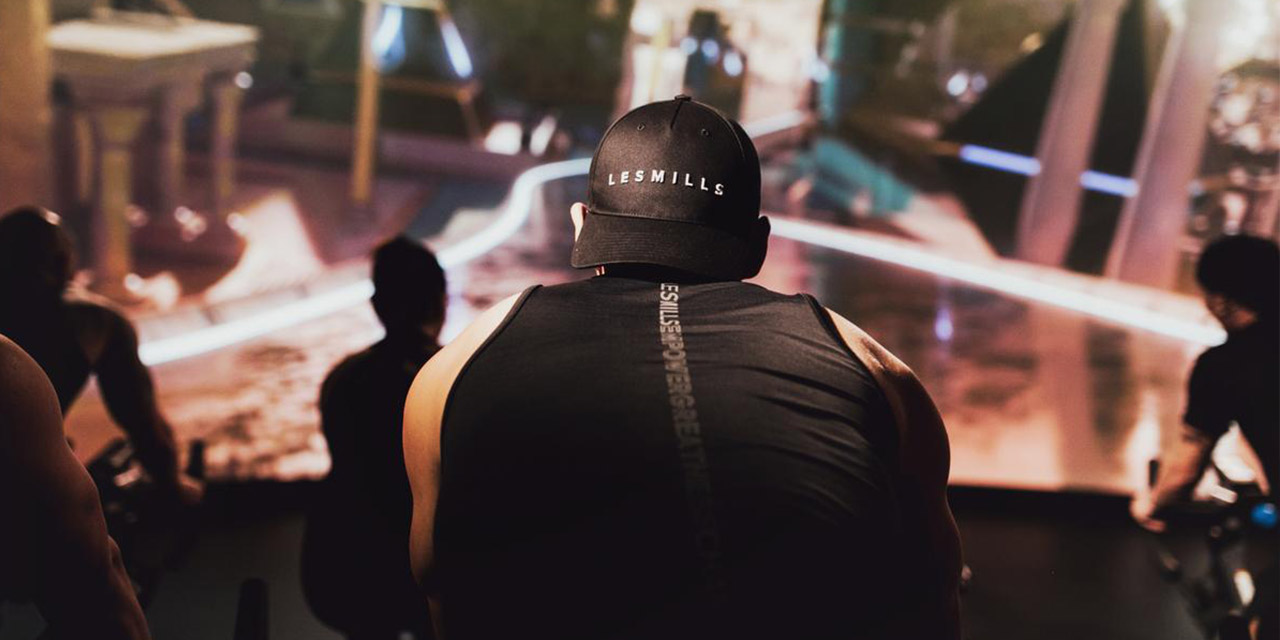
And have traditional clubs evolved?
They have started to, yes, with a number of operators creating boutique-style spaces in their clubs. In the UK, for example, David Lloyd Leisure has launched Blaze, while the Brazilian mar-ket leader – the BioRitmo/Smartfit group – has created a few different styles of in-club boutique. Meanwhile, in New Zealand – following the pre-vious launch of our millennial-targeted, in-club cycling studio Chain – our Les Mills clubs have a couple of millennial-style innovations set to come out this year: a boxing/running class and a functional circuit similar to the F45 model.
OUR RESEARCH SHOWS 83 PER CENT OF THOSE WHO HAVE GYM MEMBERSHIPS ALSO EXERCISE AT HOME
It’s these styles of class – in-club boutique offer-ings – that will help traditional clubs to compete with the boutiques. But they have to be done well. It needs to be an authentic environment: a small area with a community feel. Crucially, the programming and the teachers have to be real-ly great. If you look at the successful boutiques – Barry’s Bootcamp, SoulCycle and Flywheel, for example – they’ve created some really cool class-es which are also incredible workouts, and they’re led by amazing instructors.
This is a key point, because it’s in this area – instructors – that traditional clubs have done badly over recent times. Clubs have been allowed to age in this respect: US$22 is still the average instructor fee paid per class in a traditional club, which is pretty much the same as it was in the 1980s. Why would any good instructor settle for that when the average fee for teaching a boutique class is US$50–$100?
Of course, there are some really good hobbyist in-structors out there – people who are doing it for love and who are great at what they do. But this isn’t a model that will bring a new generation of rockstar instructors into traditional clubs. These operators have to start paying instructors more. They need great instructors to deliver great classes if they’re to stand any chance of compet-ing with the boutiques – and the low-cost clubs for that matter.
And there’s no point saying you’ll rely on virtual group exercise. It’s true that the leading virtual classes are taught by great instructors, and it can be a very powerful tool for traditional clubs in off-peak times. But it’s live classes that build a sense of community. It’s instructors who build relationships and drive retention. Plus, most of the low-cost clubs offer virtual classes now. Traditional clubs need to up their game when it comes to live group exercise.
What’s the best place for clubs to start?
Clubs need to look at how and where to create cool boutique areas within their facilities, and the cycling studio is the easiest place to start. Cycle classes deliver the highest profit per square foot
– the number of people you can fit into an area is higher than for any other activity – and most clubs have a cycling studio already. However, in many cases they’ve been allowed to die, running just two or three classes a day.
Meanwhile, cycling is a huge – and growing – category in boutiques; even in traditional clubs, where cycling is done well, anything up to 30 per cent of members will include it in their routines.
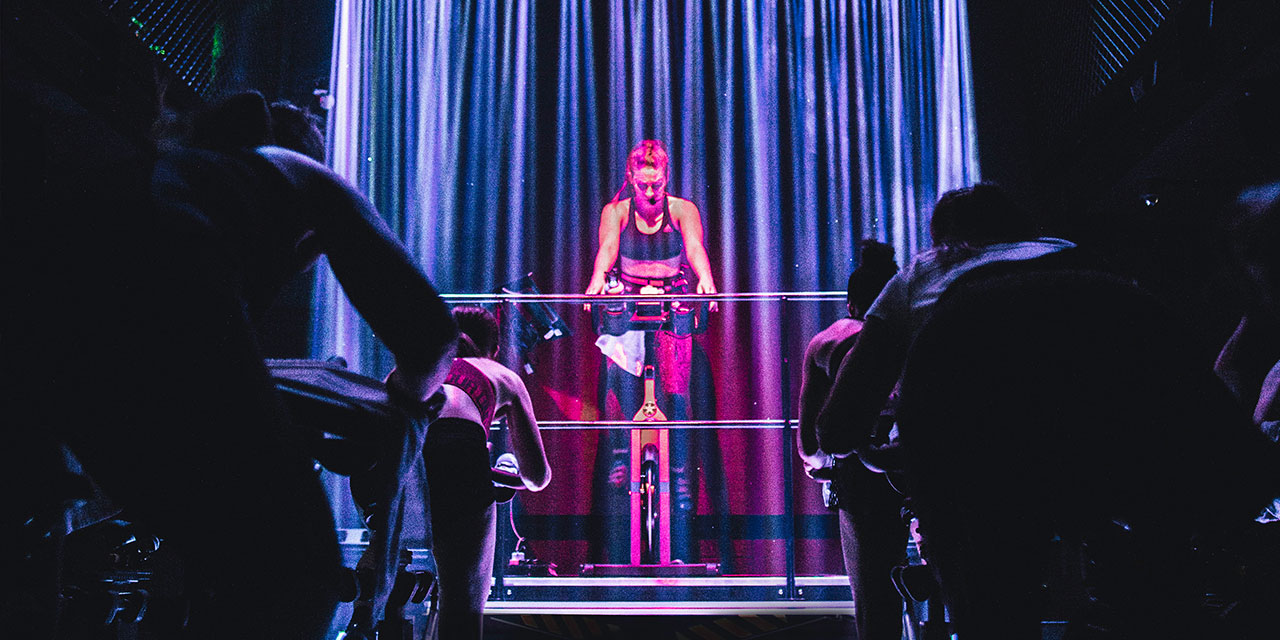
And that’s because anyone can do it, it’s a high motivation activity, and it offers great results. There’s also a growing body of research coming out of the big global research institutes show-ing how interval training on a bike can boost metabolism and weight loss, change our DNA to make muscles fitter and healthier, and even im-prove the cellular health and functionality of our muscles as we age.
So, while running, boxing, HIIT, yoga and so on are all opportunities for traditional clubs when it comes to in-house boutique spaces, definitely the most logical place to start would be upgrading existing cycling studios: upgrading the décor, the AV, the programming, the instructor quality by paying for rockstars… If you have great content, great teachers and a great space, you become competitive again.
Can you offer a few examples of great cycling studios that might act as inspiration?
There are lots of great examples out there. Décor-wise SoulCycle is great, and it has some very good instructors. The workout isn’t for me though, with too much high-speed stuff out of the saddle. In terms of the workout, I love Flywheel – it’s more athletic, more about interval training. Space Cycle in Shanghai is very cool too, as are some of the immersive studios we’ve worked with around the world: TMPL in New York City and Pure Fitness in Hong Kong, for example.
But in terms of overall experience, my two current favourites are London’s 1Rebel Victoria and the new TRIP studio in our Les Mills Auckland club. 1Rebel Victoria has done something incredible. It’s the single best group exercise studio in the world – a truly amazing experience – and it’s setting the standard for clubs around the globe. [Read more about 1Rebel Victoria in our interview with 1Rebel co-founder James Balfour.]
Meanwhile, in Auckland, we have 100 bikes in a theatre-style studio that’s been designed by some hot young architects. The studio is dark, illuminated from the front by a concave screen – 20m wide by 3m high – on which we run our immersive cycling classes, THE TRIP. We’re now on the 16th release of THE TRIP, with US$500,000 investment going into the production of each class, and it’s a truly addictive experience. I do it three times a week!
Tell us a bit more about THE TRIP…
When we first launched THE TRIP, we were adamant that the screens had to be huge, but re-cently we’ve realised it can still work on smaller screens. If you have a 4×3 mosaic screen – that is, 12 smaller screens joined together – the experience can still be immersive for up to 35 people. Even on regular 3m-wide virtual screens, it’s great.
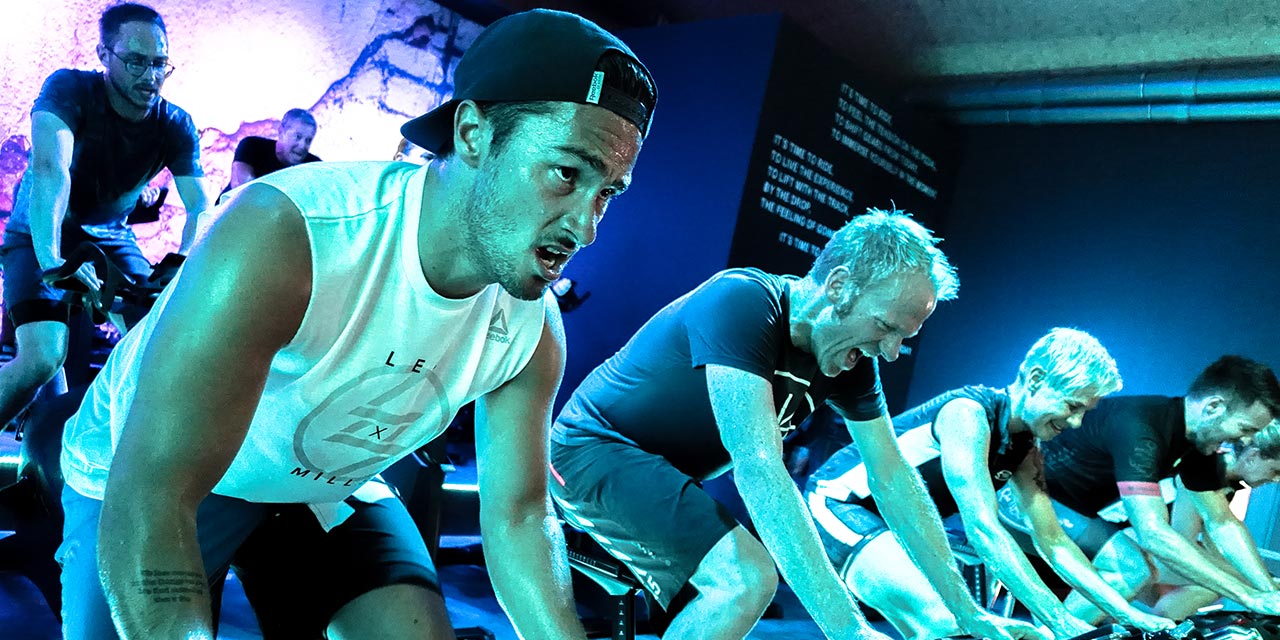
This has helped THE TRIP to explode: since we launched these new formats and virtual TRIP three months ago, we’ve gone from just a handful of studios around the world to over 100 installations sold. I have absolute confi-dence that it’s going to be the next big thing, available in thousands of clubs over the next few years. It leapfrogs any club’s studio ahead of even the best boutiques.
Finally, let’s chat about Peloton and the impact this has had on the market…
The at-home fitness market is a huge category and always has been, right back to the days of Jane Fonda workout videos. Our research shows that 83 per cent of those who have gym mem-berships also exercise at home.
What’s happening now is simply that the technology is evolving, facilitating products like Peloton and Zwift. There’s a lot of content streamed online too, although here it’s often a case of quantity over quality – there’s a lot of rubbish out there. But overall, the range of at-home exercise options is growing fast.
In terms of Peloton specifically, it’s doing very well as a business and I love what it’s doing for cycling as a whole. But it is quite a simple prod-uct in terms of its content, simply streaming live classes out of a studio. Some of its teachers are quite good, but generally, I’d have to be honest and say the classes aren’t fabulous compared to other virtual classes that have been well choreo-graphed, filmed in great locations using multiple camera angles and top cameramen. You can get bored after a while
PELOTON IS DOING VERY WELL AS A BUSINESS AND I LOVE WHAT IT’S DOING FOR CYCLING AS A WHOLE – PHILLIP MILLS
So, what’s driving Peloton’s success? The tech is good, but it isn’t the live streaming that’s ultimately driving its appeal: only a small proportion of Peloton users take part in these classes, with most going back into the pre-recorded library to pick their favourites. Lots of people just use the Peloton app on their own bikes.
What Peloton has done absolutely brilliantly – and the same goes for SoulCycle – is an amazing marketing job. Both these brands have succeed-ed in bringing bikes back to the fore, so I really want to see them do well. They’ve done great things for the category. Really, the whole indus-try can now benefit from what they’ve done.
Fitness World – indoor cycling version 2.0
To meet the members’ request for superior cycling experiences, Fitness World Denmark is in the process of implementing a new indoor cycling concept. Upgrading all indoor cycles to BODY BIKE SMART+ and implementing INTELLIGENT CYCLING and the use of BODY BIKE indoor cycling app, the indoor cycling experience at Fitness World is getting a long-awaited boost.
Indoor cycles and facilities are generally cost-intensive, and to run a healthy business high attendance and happy members are crucial. By engaging the users, boosting the overall cycling experience and allowing everyone to participate in the same cycling session regardless of their level, the new indoor cycles and digital solutions are expected to ensure high attendance and membership growth.
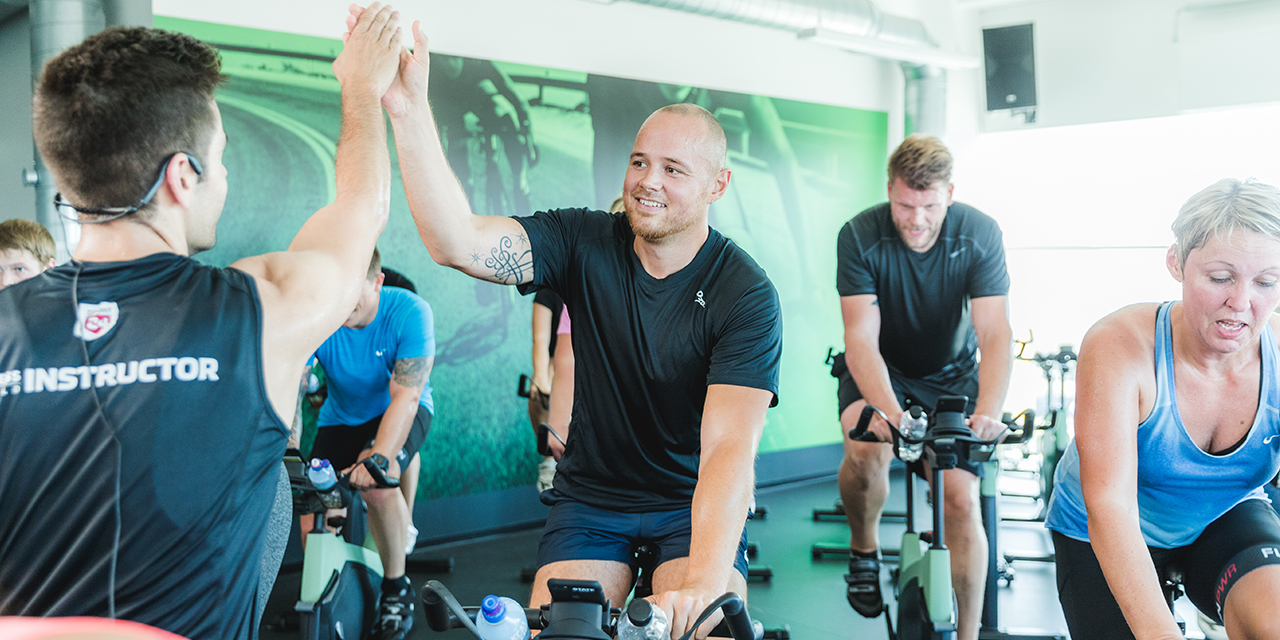
Even though we offer a wide range of team workouts, indoor cycling has always been very popular and one of our top priorities
”Fitness World is a full-service fitness centre with a wide range of workouts and classes to meet almost anybody’s fitness needs. How important is indoor cycling to your business?
Even though we offer a wide range of team workouts, indoor cycling has always been very popular and one of our top priorities. Even during periods with fluctuating attendance levels, indoor cycling has always ranked high. With the introduction of new indoor cycles and a new and updated indoor cycling concept, Fitness World is revitalising their indoor cycling classes and taking them into the future.
How did you choose your new indoor cycling concept?
Fitness World is a nationwide chain with 106 centers. Upgrading the indoor cycling equipment and facility at all centers is, of course, a resource-intensive task, and it is important that we make lasting and future-proof choices that meet our members’ needs and expectations.
In the decision-making process, we were fortunate to have a large member base that we could count on to test various concepts and equipment and to provide us with valuable feedback. In addition to the continuous feedback we get from our members and instructors, we also did a widescale market research in 2017 to identify our members’ wishes and needs.
After the first implementation of our new indoor cycling concept in September 2017, we have continuously evaluated and adjusted the concept. The ongoing adjustments have resulted in a significant upgrade of the overall cycling experience, created the perfect working conditions for our skilled instructors, and the ultimate foundation for professional and motivational indoor cycling workouts.
”What are the most significant improvements and changes?”
Previously, the BODY BIKE® SUPREME was our standard indoor cycle – and it worked very well for us. Fitness World, our instructors and members were all happy with this model for a long time. However, our members’ needs and expectations slowly changed and to keep their motivation high, maintain high attendance levels and attract new members we had to do something differently.
One of the things that has changed on the fitness scene today is that people want to track, measure and document their efforts. That was not an option with the SUPREME, but with our new BODY BIKE® SMART+, they can do just that. The bikes have built-in software that provides users with all the data required and is compatible with various devices and platforms.
To ensure consistent, high-quality workouts we have decided to implement INTELLIGENT CYCLING as our shared training platform. It is an online tool that allows our instructors to effectively design workouts within the predefined Fitness World bike classes, such as Bike Standard, Bike Edge and Bike Rush etc. INTELLIGENT CYCLING uses five colour zones that indicate the level of resistance. and allows the riders to follow the progress of the workout on screens in the studio.
The new BODY BIKE® SMART+ cycles work with the BODY BIKE indoor cycling app. The app allows the riders to connect their phone with the bike and receive performance data throughout their workout including watt. The BODY BIKE indoor cycling app uses the same colour zones as INTELLIGENT CYCLING and makes it easy for the riders to follow the workout. By entering personal FTP value, the colour zones will automatically adjust the level of resistance within the zones to match each individual rider. Meaning that riders on various levels can attend the same workout and still get a personalised cycling experience. After each workout, riders are able to save their performance data on their mobile phones and subsequently upload the data to STRAVA.
Last but not least, we have worked intensely with our instructors. Even though technology has made its entry into the cycling studios, the instructor still plays an important role, when it comes to ensuring high attendance and attracting members. We have tried out video classes without an instructor present several times, and it has not been a success. Our members want a motivational instructor to inspire them to do their utmost, and they often choose their favourite instructor rather than their favourite class.
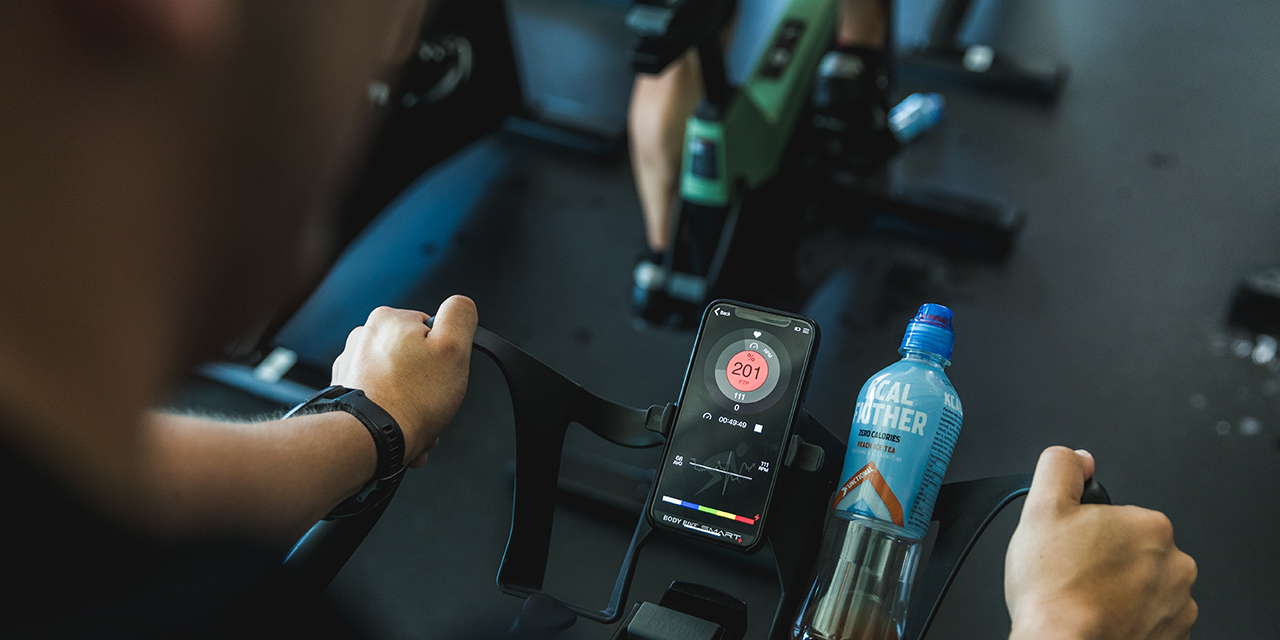
People want to track, measure and document their efforts
How has the new cycling concept gone down with the instructors?
The new cycling concept is, of course, different from what the instructors have been used to so far, and their reactions have spanned everything from concern and frustration to joy and excitement. But regardless of the new setup and the new technology, our instructors are still the most important factor in the studio. They are the ones creating the positive vibes, the energy and the strong personal relations.
Consequently, training our instructors has been a top priority. We have made a huge effort to inform our instructors about – and train them in the use of – INTELLIGENT CYCLING, the BODY BIKE® SMART+ cycles, and the BODY BIKE indoor cycling app. We have continuously focused on the positive and the many new possibilities instead of on the limitations. If it is used correctly, we are convinced that the INTELLIGENT CYCLING platform will allow our instructors to focus on motivating our members instead of on communicating information about the workout program and content. Brian Overkær from INTELLIGENT CYCLING has been in charge of training the instructors, and after a test period, evaluations clearly show that our instructors and especially our members are very excited about the new concept and the many new possibilities.
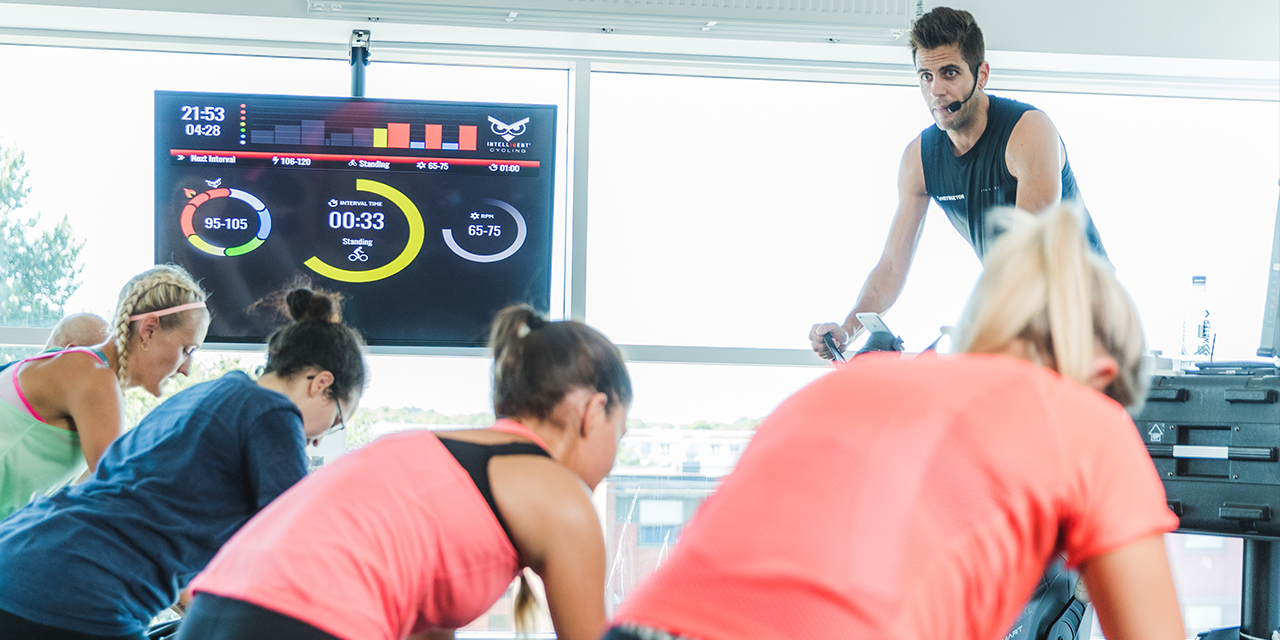
”You point out that skilled instructors improve attendance and attract members. How do you find instructors with the right qualifications and personalities?
We make sure that our instructors have the right level of training and the right qualifications at our own training academy, Group Fitness Academy. It is an ongoing process, and we continuously invite our instructors to improve their skills and participate in workshops and further training. One of our key focus areas is developing social skills making sure that our instructors are able to deliver motivating and entertaining workouts.
Being a Fitness World indoor cycling instructor takes dedication and a strong personality
Being a Fitness World indoor cycling instructor takes dedication and a strong personality. It is important that you are outgoing, energetic, have strong social skills and are able to motivate others. You are not necessarily a Pro Tour rider with a body fat percentage below 10 climbing the Alpe d’Huez in less than 50 minutes. Our members form a representative cross section of the population and so do our instructors. Some of them have a background in the fitness industry, others do not. Regardless of their background, they all have to go through our internal Fitness World training programme including workshops and online training.
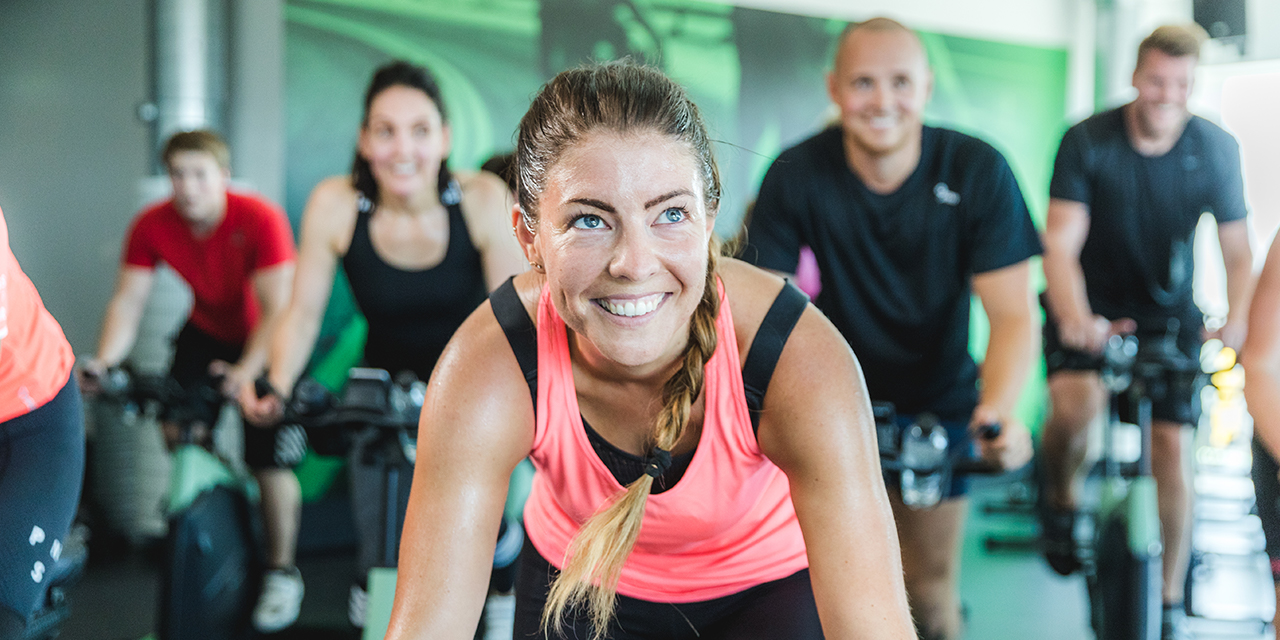
”How do you make sure that there is a class to meet every fitness need?”
It is our goal at Fitness World to meet the general public’s diverse needs for exercise and fitness. Indoor cycling has a very wide appeal, and we strive to put together a mix of classes that accommodate various needs. With the implementation of new technology our members are able to join any cycling class they prefer regardless of their fitness level. With the BODY BIKE® SMART+ cycles, INTELLIGENT CYCLING and the BODY BIKE indoor cycling app everybody can join the fun and participate at their own pace and level.
Do you continuously develop new classes?
Our members are happy with the cycling classes, we offer today, but we still want to come up with new and inspiring workouts to keep them motivated and coming back for more. One of the new things we have in the pipeline is boot camps that focus on developing the individual rider. Maybe the boot camps can combine some of our existing concepts as for example personal training and BIKE?
Furthermore, we are in the process of exploring how our many digital platforms might work together, and how we – together with BODY BIKE – can create even cooler digital cycling experiences.
”What is the future of indoor cycling at Fitness World?
We launched INTELLIGENT CYCLING and BODY BIKE® SMART+ cycles in eight of our fitness centres in September 2017. In the first year, attendance increased by 5% with an average of 11% more riders joining the classes. We continuously receive positive feedback from our members, and with intensive training our instructors have embraced the new solutions focusing on what they do best – training, guiding, entertaining, motivating and creating great energy.
Today, the new cycling concept has been introduced in 38 out of 106 centres and the rest will follow in 2019-2020.
Fitness World fact Box
- Toal of 171 Fitness World centers
- 106 Centers with indoor cycling facilities
- 4,660 indoor bikes
- 500,000 members
- 2,300 instructors

